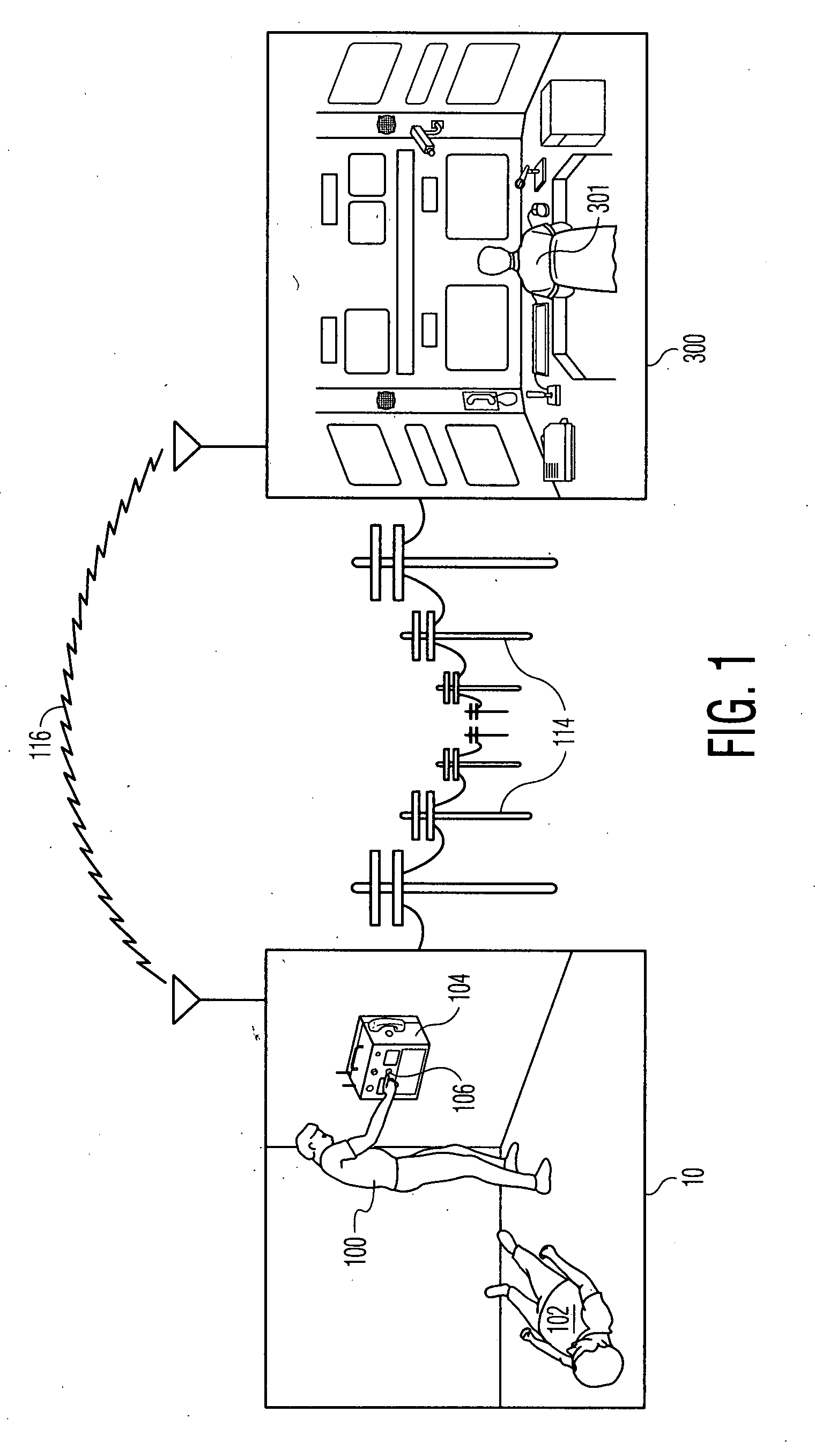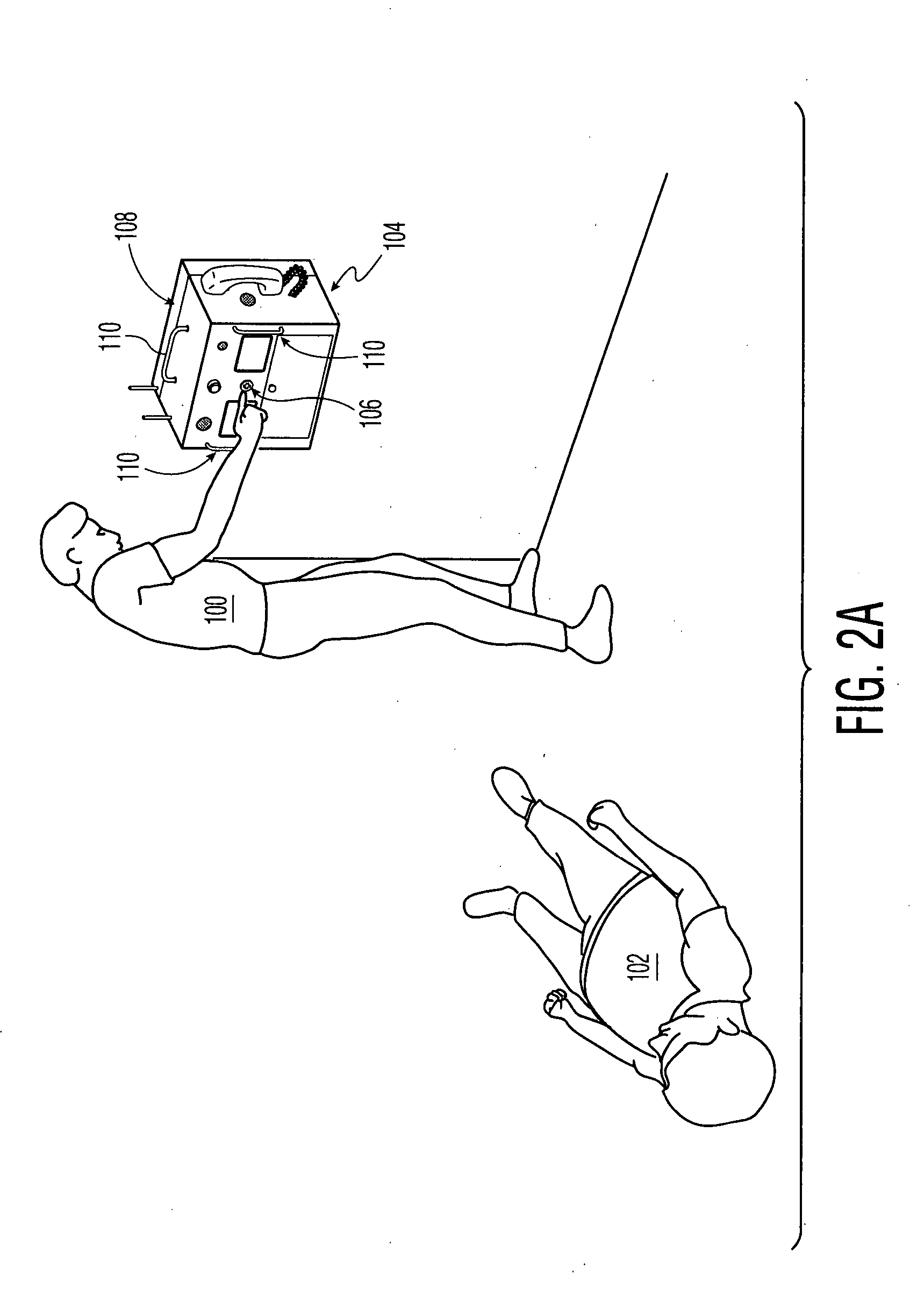System for cardiac resuscitation
a cardiac resuscitation and system technology, applied in the field of systems for cardiac resuscitation, can solve the problems of poor results associated with a long response time, reported results, and little recovery probability, and achieve the effects of reducing the response time of a medical professional, reducing the degree of communication redundancy, and alleviating anxiety
- Summary
- Abstract
- Description
- Claims
- Application Information
AI Technical Summary
Benefits of technology
Problems solved by technology
Method used
Image
Examples
Embodiment Construction
Contents
1. System Overview
[0233] 1.1 Description of the Emergency Scene
[0234] 1.2 Description of the Central Station
[0235] 1.3 Block Diagram of the System [0236] 1.3.1 Two Unit System: Portable Unit and Central Station [0237] 1.3.1.1 System Operation when PU-CS Link is Intact [0238] 1.3.1.2 AED Backup in the Event of Communication Failure; Role of the Master Control Unit [0239] 1.3.2 Three Unit System: Portable Unit, Stationary Unit and Central Station
[0240] 1.4 Figure Assignments
2. Portable Unit and Stationary Unit: Exterior Elements
[0241] 2.1 Portable Unit: Front and Right Side Panels
[0242] 2.2 Portable Unit: Tool-kit
[0243] 2.3 Portable Unit: Rear and Left Side Panel
[0244] 2.4 Stationary Unit: Front and Side Panels
[0245] 2.5 Portable Unit: Screens
3. Electrode Pads
[0246] 3.1 Physiology of Defibrillation
[0247] 3.2 Torso-Shaped Multi-electrode Pads
[0248] 3.3 Matrix Electrode Pad
[0249] 3.4 Single Electrode Pads
4. Sample Cardiac Arrest and System Operation
[0250] 4...
PUM
 Login to View More
Login to View More Abstract
Description
Claims
Application Information
 Login to View More
Login to View More - R&D
- Intellectual Property
- Life Sciences
- Materials
- Tech Scout
- Unparalleled Data Quality
- Higher Quality Content
- 60% Fewer Hallucinations
Browse by: Latest US Patents, China's latest patents, Technical Efficacy Thesaurus, Application Domain, Technology Topic, Popular Technical Reports.
© 2025 PatSnap. All rights reserved.Legal|Privacy policy|Modern Slavery Act Transparency Statement|Sitemap|About US| Contact US: help@patsnap.com



